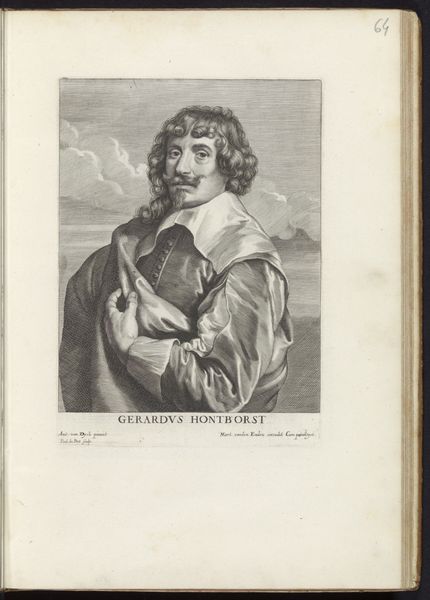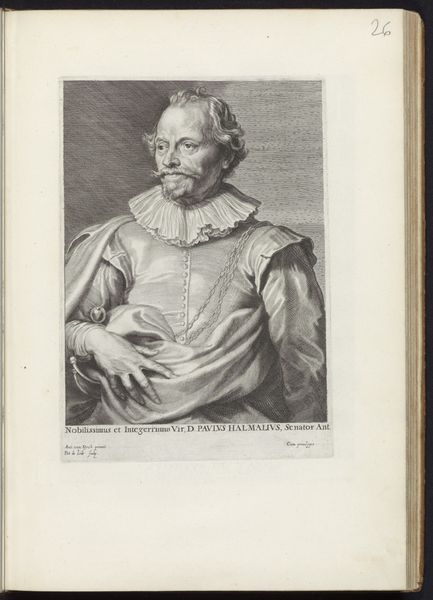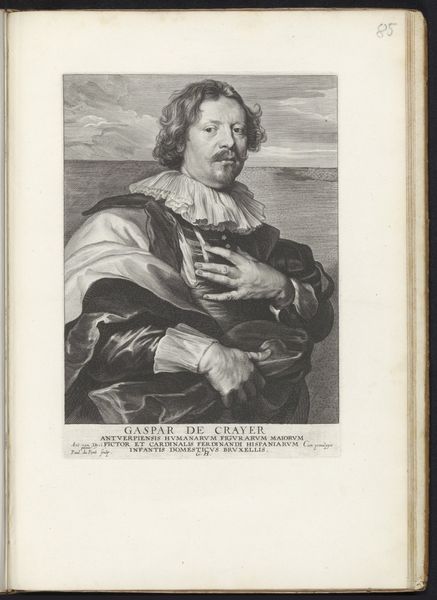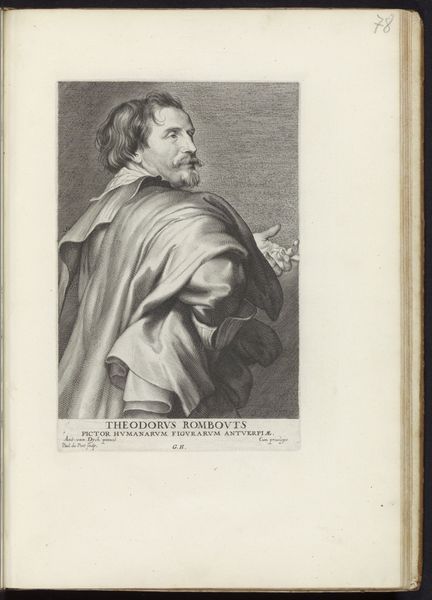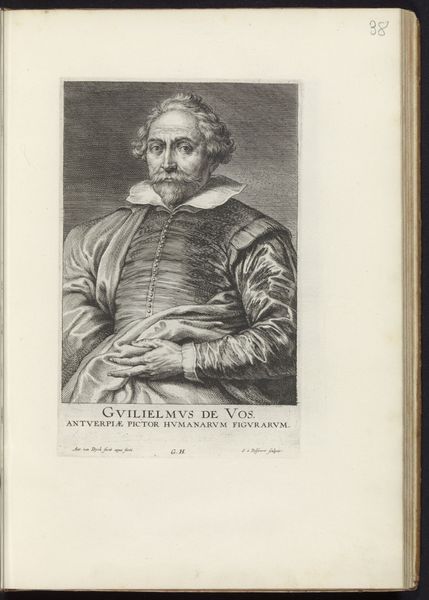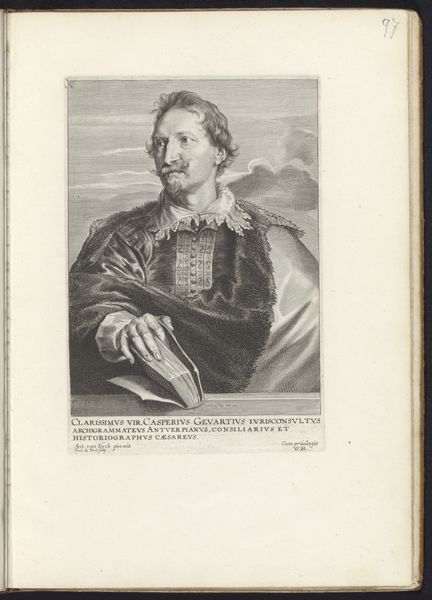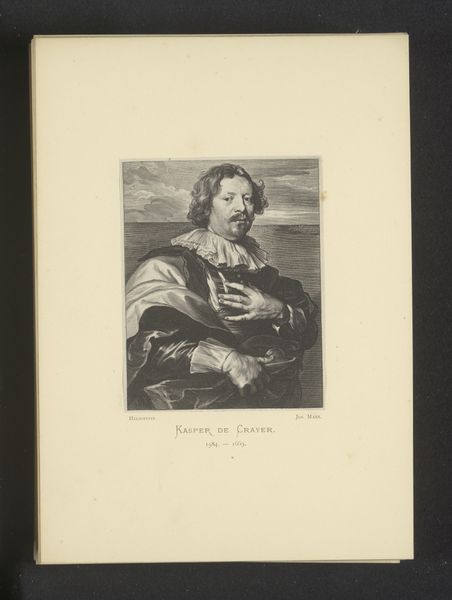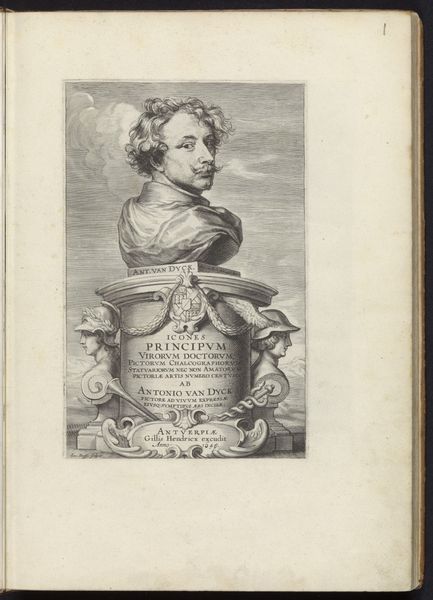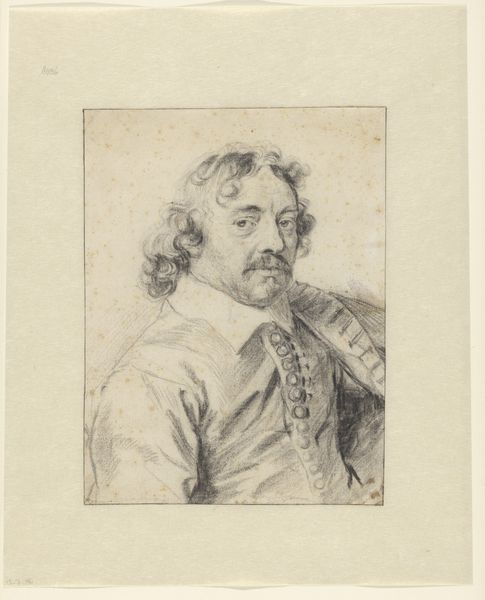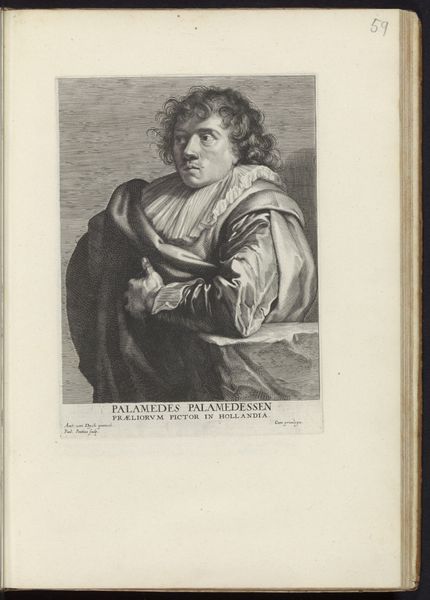
engraving
#
portrait
#
baroque
#
dutch-golden-age
#
old engraving style
#
figuration
#
engraving
Dimensions: height 247 mm, width 170 mm
Copyright: Rijks Museum: Open Domain
Curator: Oh, it’s rather arresting, isn't it? The directness of his gaze almost feels like he is present with us here. Editor: Right, and a bit melancholic if you ask me, almost brooding. I notice immediately the stark monochrome palette, obviously given it is an engraving. But also, it’s striking how the artist captured different textures within this constraint. Let's contextualize a bit: this is “Portret van Andreas Colijns de Nole,” an engraving possibly from the period 1630 to 1646, made by Pieter de Jode the Younger. It’s currently housed at the Rijksmuseum. Curator: Yes, I find myself quite taken by how he portrays Nole—with the sculpture included. I imagine that he worked as a sculptor in the Flemish Baroque. The ruffled collar seems so delicately rendered and then next to the strong musculature of the sculpture...it is the mark of a truly sensitive hand. Editor: Absolutely, it’s a real contrast. The production process for an engraving like this during the Dutch Golden Age interests me. De Jode had to meticulously translate a three-dimensional being into a two-dimensional image, accounting for light, shadow, and texture, all using lines carved into a copper plate. The printing would have also required specialized paper, ink, and skilled labor. These details mattered as materials spoke volumes. The engraver must have truly wanted to immortalize Mr. Colijns de Nole and give the artwork its gravity. Curator: A lasting impression! One wonders about their collaboration, if the work was done while both were together or produced later, maybe even from a drawing. It has such warmth to it. It whispers secrets about that era. It is really incredible that Mr. de Jode could extract so much feeling from cold metal and acid. I shall think of that the next time I handle some raw materials. Editor: And think of the copies of this image being distributed. Engravings facilitated knowledge and status because portraiture was accessible and transportable during a time without photography, changing how individuals engaged with visual culture. It emphasizes the artist's material intervention. Curator: Exactly, to look at his somber yet self-assured portrait and imagine his hands... I feel more connected somehow to time itself. Editor: A fitting encounter, all things considered.
Comments
No comments
Be the first to comment and join the conversation on the ultimate creative platform.

